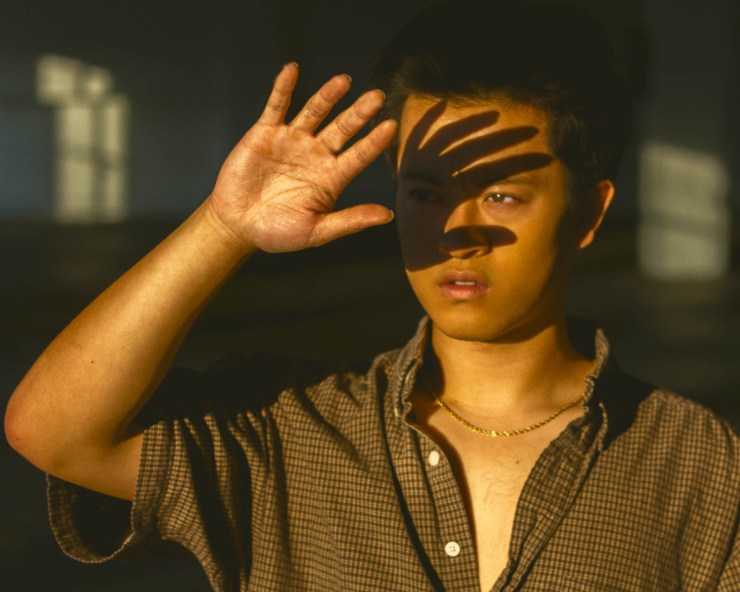If you haven’t checked out part one, check it out here.
6. Composition and settings
To become a better portrait photographer, pay attention to your camera’s settings to suit each situation you find yourself in.
Taking a good picture isn’t just about having a good camera; it also requires good composition and suitable settings.
Some cameras include a portrait mode. This is a good place for beginners to start when trying to become a better portrait photographer.
7. Select creative subjects
Become a better portrait photographer by knowing the subject of your photo. A creative subject does not always mean a person who always throws his smile in front of the camera.

The subject is someone or something that interests you; that could be your pet lying on the ground, your baby trying to grab his toy on a chair, or people playing ball in front of your house.
The right choice in subject will have a clear effect on the quality of your photos. Take advantage of everything that is around you to produce good quality photos.
8. Managing shutter speed
Another possible answer to the question of how to take better portraits is shutter speed management.
When adjusting the shutter speed on your camera, the focal length will be a problem if you experience vibrations or shake when shooting because it will harm your photos.
To overcome this, make sure your shutter speed is higher than your focal length. For example, if your focal length is 200mm, then set your shutter speed to 1/250s or faster.
It also means you can make your shutter speed slower when you want to take pictures on a broader area such as 1/20s with a focal length of 18mm, although this won’t help enough if your subject moves too fast.
Don’t forget to use the anti-shake system on your camera. Not every lens will feature this technology but, if you have it, use it.
9. Lens configuration & selection
One of the most simple portrait photography techniques is all about choosing the right lens.
Selecting a camera lens to use in shooting can have a significant effect on every shot. To get a visual appearance that is pleasing to the eye, your lens choice is important.
Since I am a Canon user, I’ve been using the “nifty-fifty” for years. The 50mm lens is my go-to lens for portraits, and it’s also very affordable compared to other lenses out there.
10. Positioning
Another portrait photography technique tip is positioning. In photography, the idea that placing the subject in the middle does not always give good results.
That’s why you should use framing to position your subject appealingly. If done correctly, you can produce excellent and exciting work.
11. Intentions
Intent might seem like the least important point because it has less to do with photography itself, but still has a deep influence on the photo.

Photography is an art, and not all art should be aesthetically pleasing. We can always experiment with specific messages to convey feelings or even thoughts.
Every frame is a painting and allows us to express something new.
Putting it together
Taking a good portrait photograph isn’t as simple as it seems.
Many things must be considered in connection with getting good results in every shot, ranging from determining the type of camera used, lighting settings, shooting techniques, even to the small things such as carrying a reflector, flash or light, etc.
DSLR cameras offer many features that simplify the process of preparing the shot, so knowing the advantages and disadvantages of the camera will help you make the best photographic decisions. Knowing what you can and can’t do, as well as what you should and shouldn’t, will make it easier for you to excel in every type of shooting, whether indoors or outdoors.
Now go out there and try!
Tell your story with the second annual Visual Storytelling Conference!
Experience four days of interactive, online training sessions featuring a range of educational content with experienced photographers and content creators. This free event kicks off with a series of technical boot camps to build essential skills, followed by live, online sessions on photography, video, business and social media. Join live from March 10-13, 2022!
